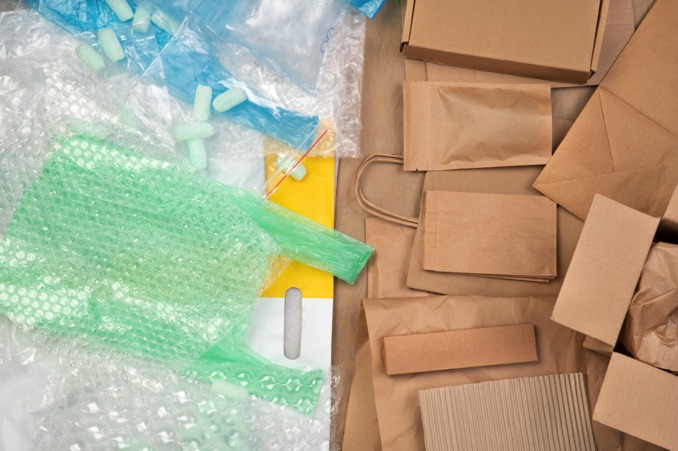Today’s eco question: How to choose low-impact packaging? The - Première Vision Paris - Denim Première Vision - Première Vision New York
Packaging’s functional role of protecting and identifying products makes it indispensable. Ways to reduce packaging’s environmental impact include reducing volume and frequency of use, constantly re-evaluating its absolute necessity, and identifying the most suitable materials for an optimized design. So, when it comes to choosing paper from sustainably managed forests or recycled plastic, which one is the winner?
The source of packaging materials
Sustainably managed paper is often FSC or PEFC certified, providing a guarantee of forest conservation and restoration and biodiversity, combined with fair-trade values for workers and local populations. It falls into 3 categories: entirely made from virgin resources, containing a mixture of wood from certified forests and recycled wood, or fully recycled from wood sourced from pre- or post-consumer channels.

The polyethylene used in polybags, for example, exists in a recycled version, and according to lifecycle analyses, polyethylene requires less energy for production than its paper counterpart while proving more resistant. But before drawing any conclusions, it’s important to consider the global life cycle of the product.
Read also: Smart Key: Towards ever more eco-responsible packaging
The beginning of the end
Recycled polyethylene is convincing because it is more resilient and waterproof. However, today only 15% of polyethylenes are recycled, and they present the risk of generating as many microplastics as do virgin polyethylenes. Once used, and in the absence of specific treatment channels, they will meet the same fate as conventional plastics, which become landfill or are incinerated.
Paper, meanwhile, benefits from well-established recycling channels, and consumers have become accustomed to sorting on a daily basis, though there is still some doubt about the recyclability of discarded plastic. Citeo estimates that, on average, paper can be recycled up to 5 times.
So this showdown produces no absolute winner: everything depends on the intended use because recycled plastic and paper from sustainably managed forests do not offer the same functionalities. Another alternative to plastics is a bio-sourced version produced from renewable resources. Not all bioplastics are made equal: some are compostable, which means it’s important to ascertain whether they are intended for industrial or domestic composting so that they end up in the appropriate treatment channel!
